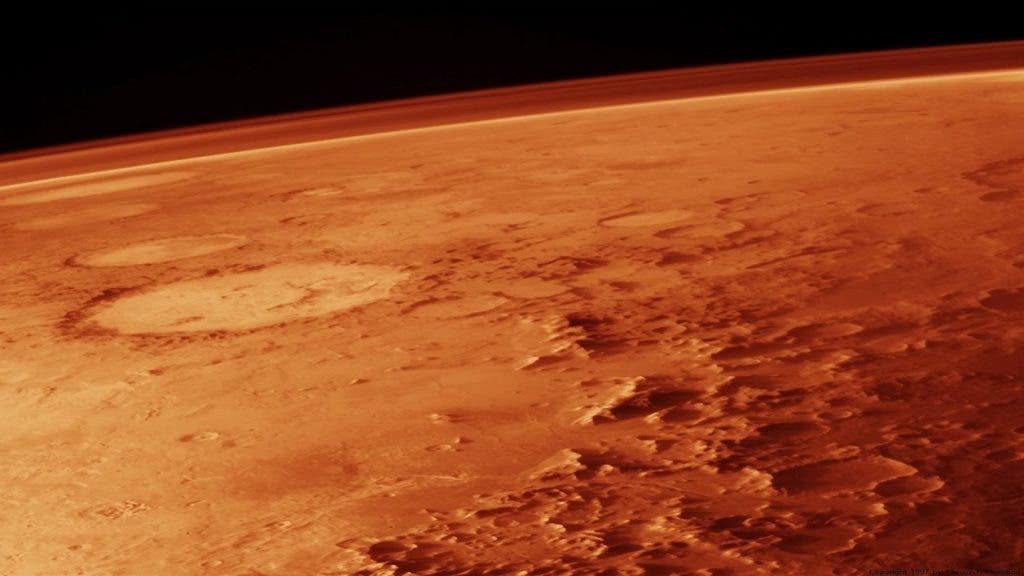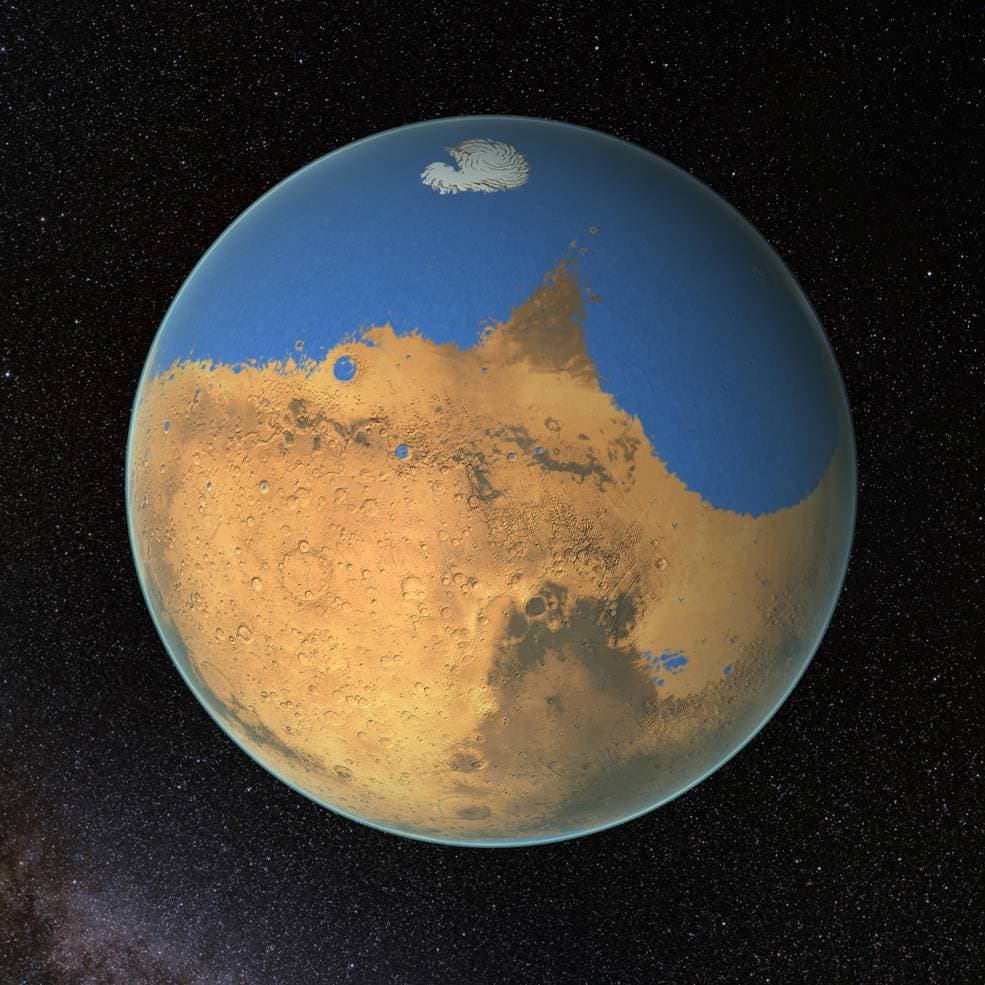
In many respects, Mars is but a shell of its former self. About 3-4 billion years ago, it boasted a hot climate that could sustain an active hydrological cycle. There were heavy rains, rivers of flowing waters, even vast oceans. All of these require a thick atmosphere. Today, however, the atmosphere is roughly 100 times less dense than Earth’s, and the Red Planet is still continuously losing gas — expending about 100 grams of its atmosphere into outer space every second.
Solar wind is regarded as an important factor that can explain this atmospheric loss. However, a grad student at Luleå University of Technology, Sweden, has come to results that say otherwise. According to Robin Ramstad, who studied for his Master of Science degree in Engineering Physics at the university, Mars’ atmosphere is adequately protected from the effects of solar wind despite lacking an Earth-like magnetic dipole.
Thin air
Here on Earth, the motion of molten iron alloys in the planet’s outer core acts like a geodynamo which generates a massive magnetic field. Scientists call our planet’s magnetic field the magnetosphere. It extends for several tens of thousands of kilometers into space, well above the atmosphere, sheltering the planet from the charged particles of solar winds and cosmic rays that would otherwise strip away the upper atmosphere, including the ozone layer that protects the Earth from harmful ultraviolet radiation.
Earth isn’t unique in this respect. Jupiter has masses of liquid metallic hydrogen in its outer mantle, creating the largest planetary magnetic field in the solar system. Uranus generates a global magnetosphere closer to the surface, which leads to some very strange quadrupole field effects — rather than just a north and a south, there are another two poles lurking in a quadrupole field. Mars also used to have a magnetic field but lost it half a billion years after its formation.

Solar wind is a stream of charged particles released from the upper atmosphere of the Sun. First described as a phenomenon in 1859, it has been observed only in the 1960s. According to one mainstream theory, it’s also responsible for the erosion of the early Martian atmosphere, which caused the greenhouse effect to collapse on the planet. At the same time, solar wind interacts with the ionized upper atmosphere, called the ionosphere, and induces a magnetosphere.
“It has long been thought that this induced magnetosphere is insufficient to protect the Martian atmosphere,” says Robin Ramstad. “However our measurements show something different.”

Right: Robin Ramstad points out the position of the Swedish instrument ASPERA-3 on a model of the Mars Express spacecraft (photo: Anastasia Grigoryeva)
Ramstad studied data beamed back to Earth by the Mars Express orbiter. The spacecraft has an ion mass analyzer mounted that measured ion escape from Mars since 2004.
The researcher combined and compared measurements of the ion escape under varying solar wind conditions and levels of ionizing solar radiation. His results suggest that solar wind has an effect on the ion escape rate, but it’s rather negligible. Instead, the ion escape rate is more dependent on EUV (extreme ultraviolet) radiation which has a large effect on the total amount of escaped atmosphere.
“Despite stronger solar wind and EUV-radiation levels under the early Sun, ion escape can not explain more than 0.006 bar of atmospheric pressure lost over the course of 3.9 billion years,” said Ramstad in a statement. “Even our upper estimate, 0.01 bar, is an insignificant amount in comparison to the atmosphere required to maintain a sufficiently strong greenhouse effect, about 1 bar or more according to climate models.”
According to Ramstad, what solar wind mainly does is it accelerates particles that are already escaping the planet’s gravity. It does not, however, increase the ion escape rate.
If Ramstad is indeed correct the question of where all of Mars’ water has gone will be put back into the scientific limelight.






